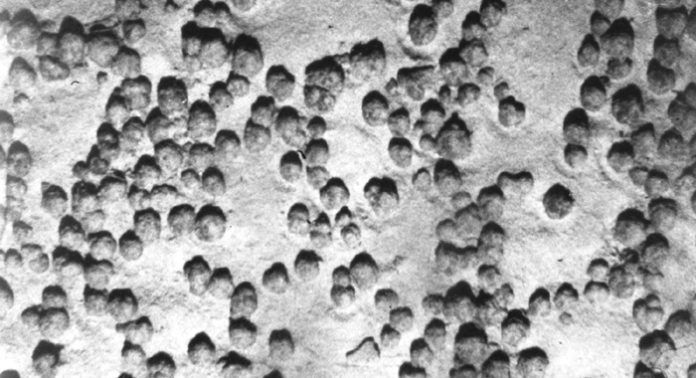
I have always found Mariana’s Trench fascinating, it’s like an alien world right on our doorstep.
Any visitor to the oceans or seas of our planet will hopefully get to see fish flitting around and whilst they can survive in this alien underwater world they still need oxygen to survive.
Breathing in oxygen is a familiar experience to us, we inflate our lungs and suck air into them to keep us topped up with life giving oxygen.
Fish are different, they get their oxygen as water flows over their gills. Water is full of oxygen which at the surface comes from the atmosphere or plants.
But deep down, thousands of meters beneath the surface, it is not so easy.
Now a team of scientists think that potato-sized chunks of metal called nodules act like natural batteries, interacting with the water and putting oxygen into the deep water of the ocean.
Thanks to robotic underwater explorers the sight of life teeming around thermal vents on the bottom of the deep ocean is not unusual. At those depths, no sunlight can penetrate to facilitate photosynthesis in plants.
Somehow though, oxygen is present in the dark, deep regions of the ocean and its the rocks that a team of scientists led by Andrew Sweetman have been exploring.
The production of oxygen by plants is well understood. Light is captured by a pigment known as chlorophyll where it is then converted into chemical energy and stored in the glucose.
During photosynthesis, carbon dioxide from air and water from soil are combined in a series of chemical reactions to produce glucose and oxygen that we use to breathe.
This oxygen from the plants plays a role in maintaining levels in the atmosphere and the oceans and seas. The study challenges this somewhat simplified explanation.
The team focussed on measuring how much oxygen was being consumed by organisms in the depths of the ocean. Water sampled from the deep showed a surprising rise in oxygen levels instead of an anticipated decline.
The study was repeated a few years later from the same location in a study commissioned by a mining company. Again they saw a rise in oxygen levels. Clearly something in the deep ocean was creating oxygen, but what?
Lab tests ruled out the possibility of microbes but the region being studied was peppered with lumps of rock known as polymetallic nodules.
The nodules are known to form when manganese and cobalt precipitate out of water and form around shells. The nodules where theorised to be the source of the oxygen but the mechanism was not understood.
The answer came when Sweetman heard a reporter calling the nodules ‘a battery in a rock’. Putting batteries in saltwater results in bubbles of hydrogen and oxygen which is the result of a process known as electrolysis.
The team measured the voltage on the nodules and found just one of them to be 0.95 volts – a little lower than the required 1.5 volts for saltwater driven electrolysis but the team were onto something, suspecting multiple rocks could cluster together to increase voltage.
The discovery of rocks on the bottom of the ocean generating oxygen is fascinating on its own but it has profound impacts on the search for life elsewhere in the universe.
We have already discovered ice covered water worlds among the moons around some of the outer planets.
It’s likely there will be others in planetary systems around other stars.
If these worlds are common then it is quite likely that oxygen is being released through electrolysis from similar metallic nodules and perhaps, supporting entire ecosystems.
Written by Mark Thompson/Universe Today.



